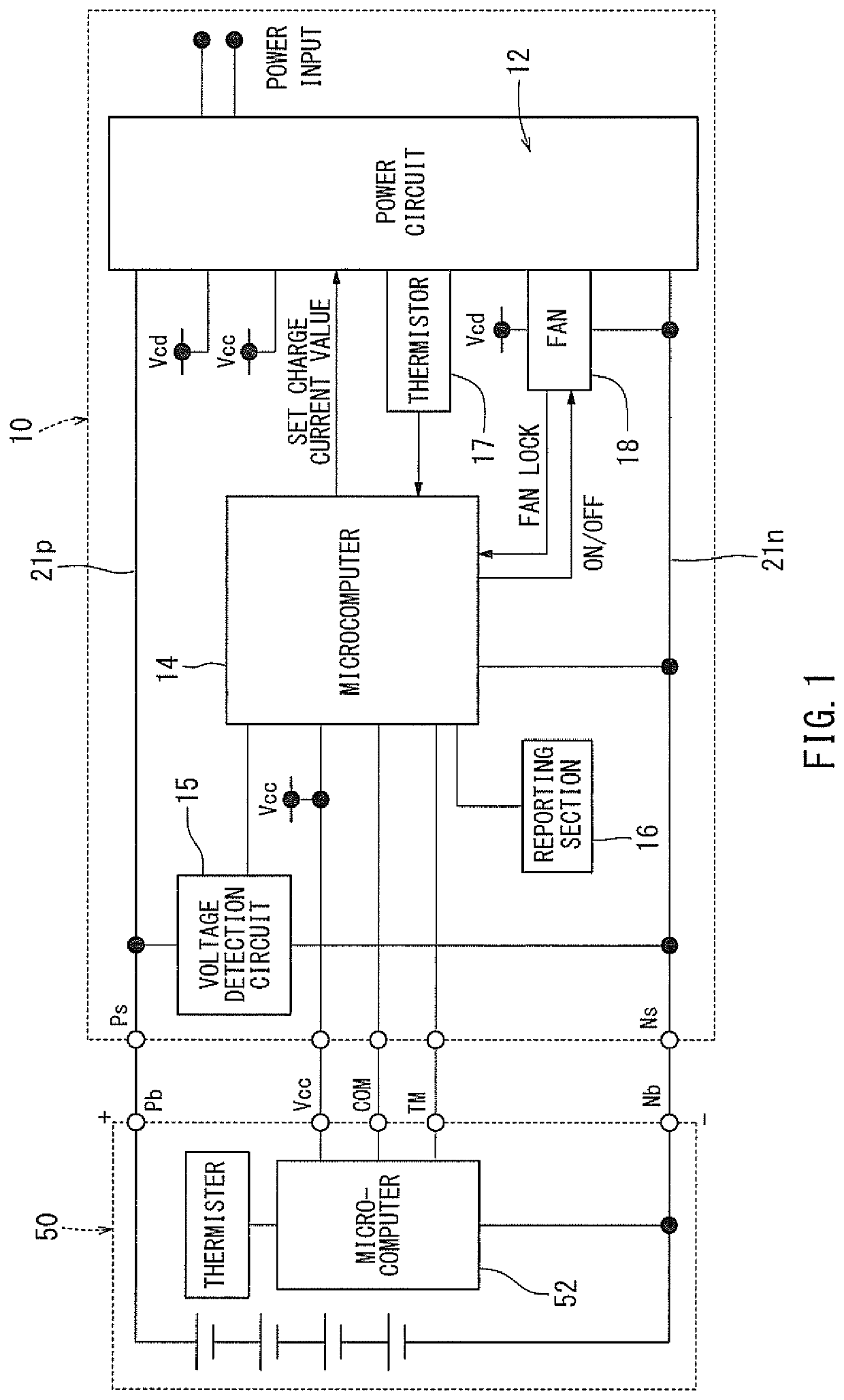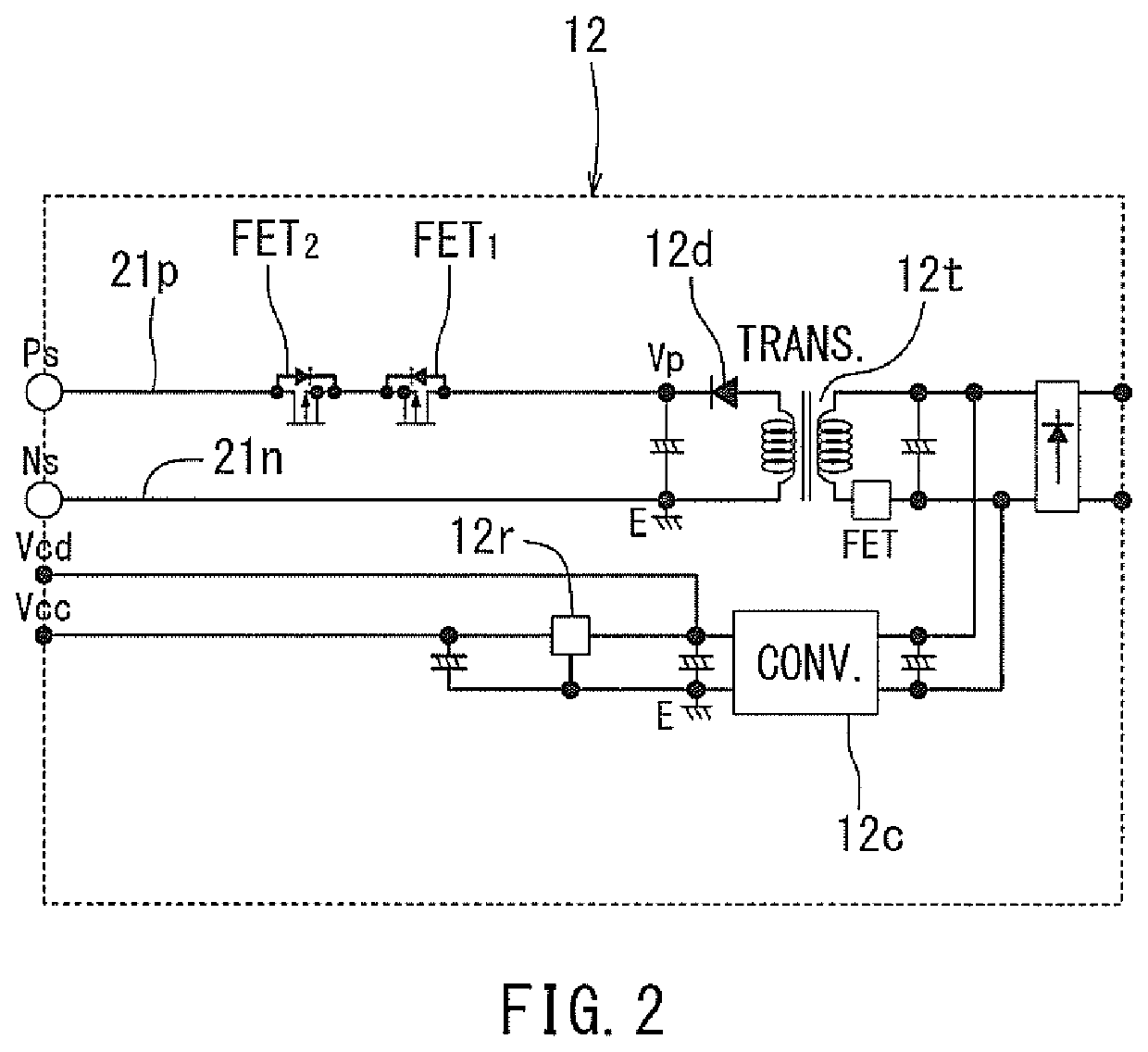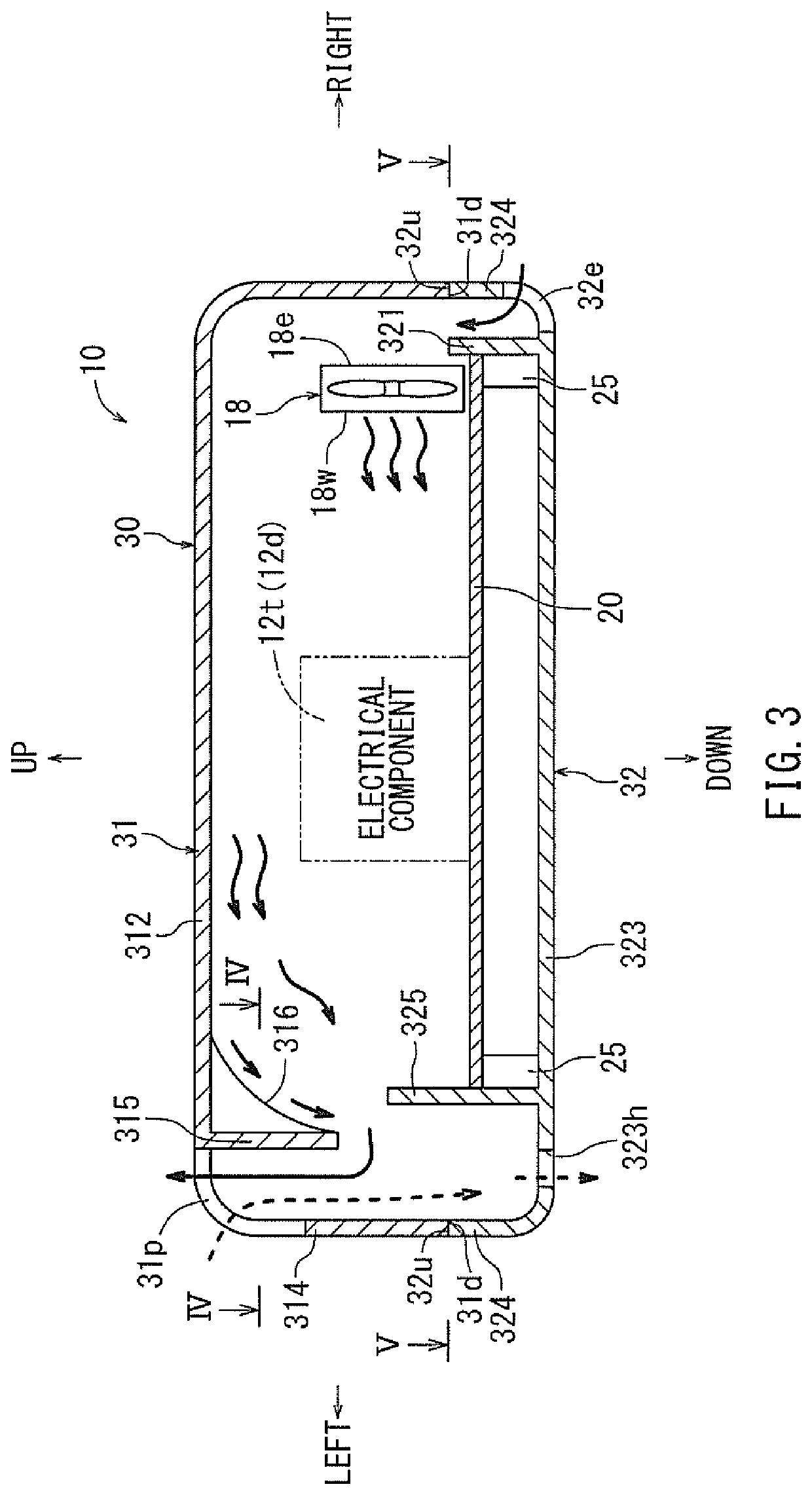Charger
a charger and charging circuit technology, applied in the field of chargers, can solve the problems of difficulty in suppressing the heat generation of the electrical components of the charger with an increased charge current, and the charger may malfunction, and achieve the effects of efficient discharge, efficient cooling, and efficient suction of outside air
- Summary
- Abstract
- Description
- Claims
- Application Information
AI Technical Summary
Benefits of technology
Problems solved by technology
Method used
Image
Examples
embodiment 1
[0028]A charger according to an embodiment 1 of the present invention will be described below with reference to FIGS. 1 to 10. A charger 10 according to the present invention is a charger for charging a battery 50 used for an electric power tool. The front, rear, left, right, up and down directions shown in the figures correspond to the front, rear, left, right, up and down directions relative to the charger 10.
[0029]10>
[0030]As shown in FIG. 1 depicting a wiring block diagram, the charger 10 comprises an electric power circuit 12, a microcomputer 14, a cooling fan 18 and a voltage detection circuit 15 etc. As shown in FIG. 2, the electric power circuit 12 is an electric circuit including a DC power source (Vp) for charge as well as a DC power source (Vcd, Vcc) for control by converting AC power from a domestic AC power source (power source input, e.g. mains) to DC power. The DC power source (Vp) for charge in the electric power circuit 12 is a power source used for charging the bat...
PUM
 Login to View More
Login to View More Abstract
Description
Claims
Application Information
 Login to View More
Login to View More - R&D
- Intellectual Property
- Life Sciences
- Materials
- Tech Scout
- Unparalleled Data Quality
- Higher Quality Content
- 60% Fewer Hallucinations
Browse by: Latest US Patents, China's latest patents, Technical Efficacy Thesaurus, Application Domain, Technology Topic, Popular Technical Reports.
© 2025 PatSnap. All rights reserved.Legal|Privacy policy|Modern Slavery Act Transparency Statement|Sitemap|About US| Contact US: help@patsnap.com



